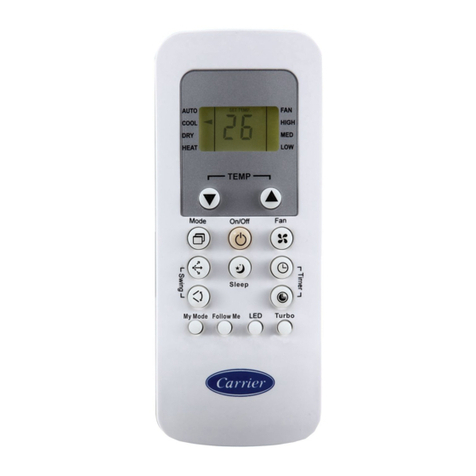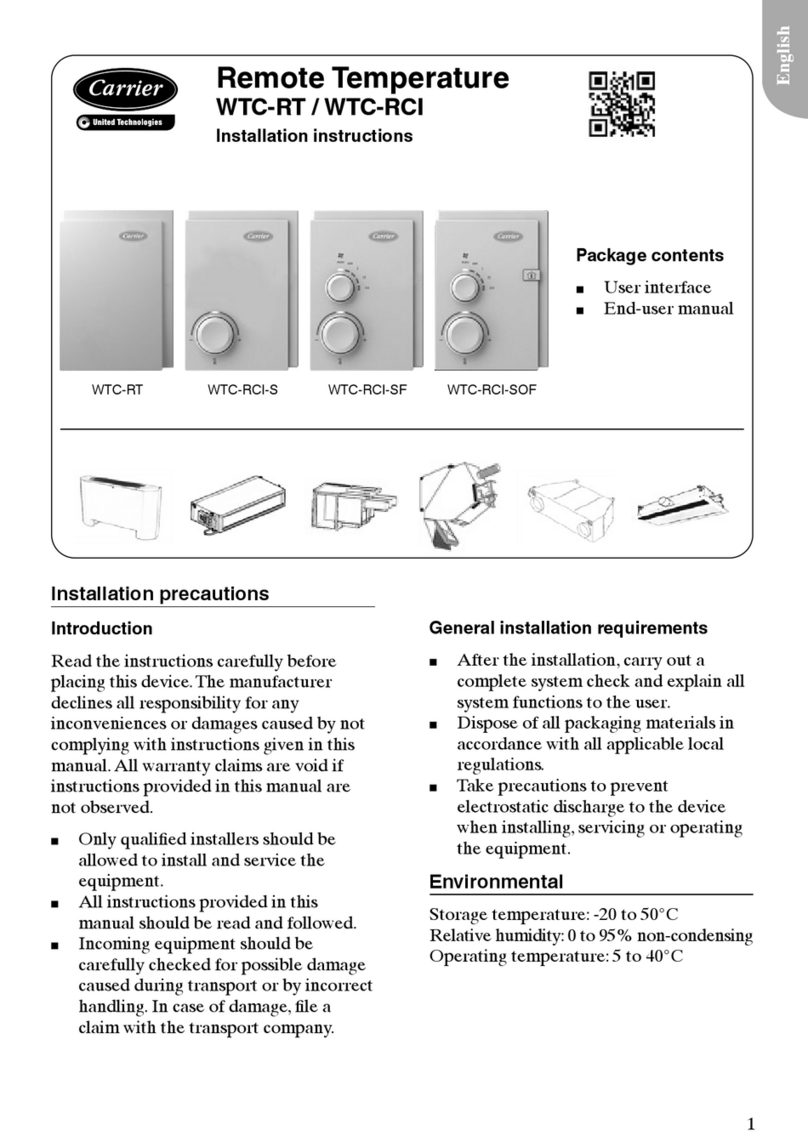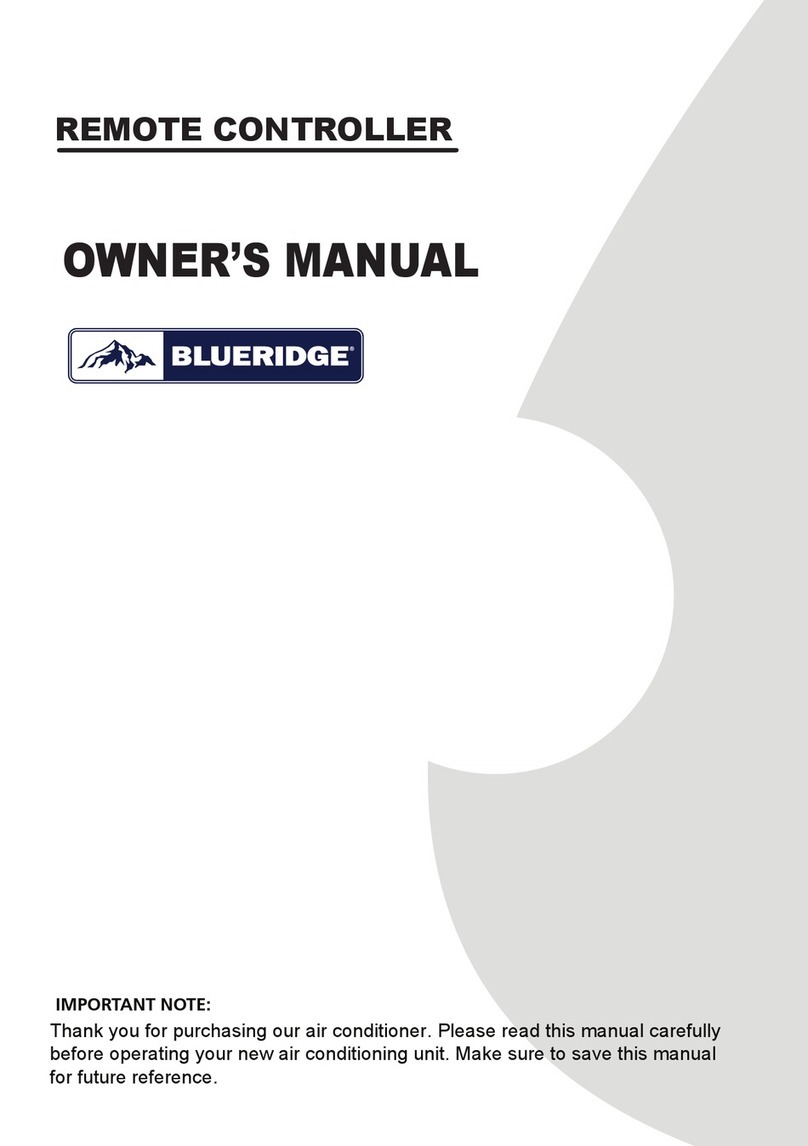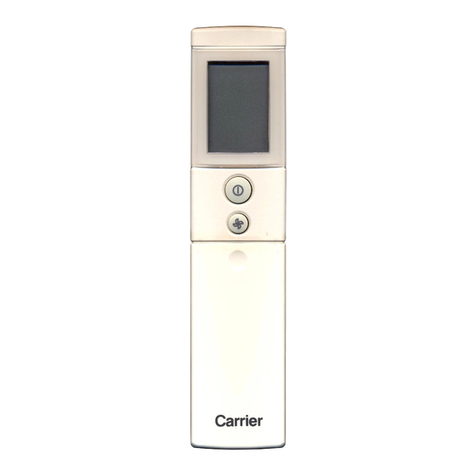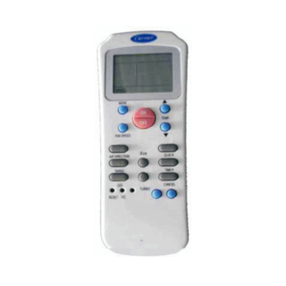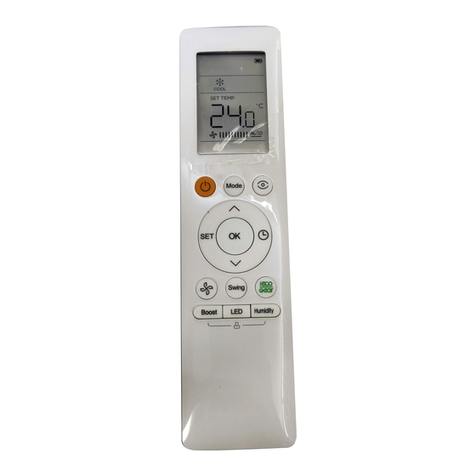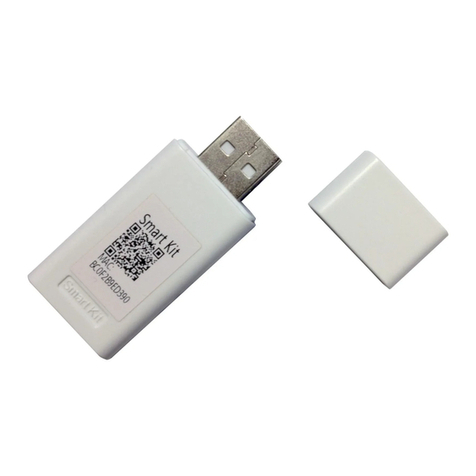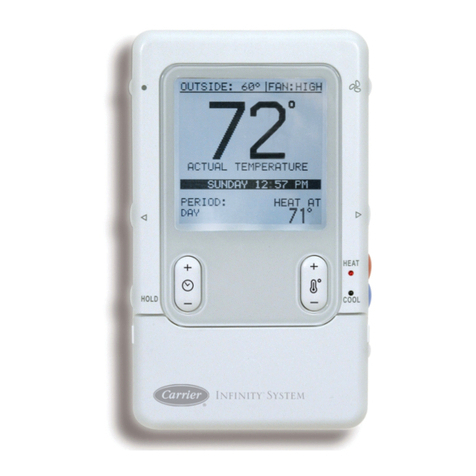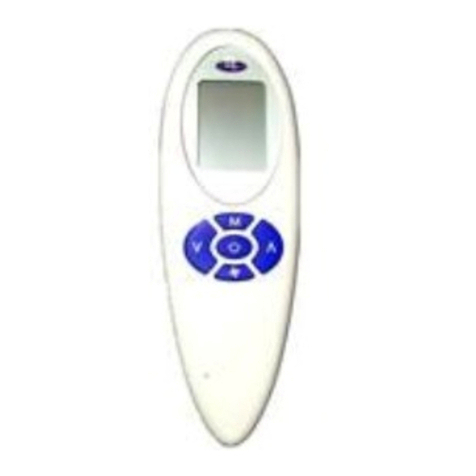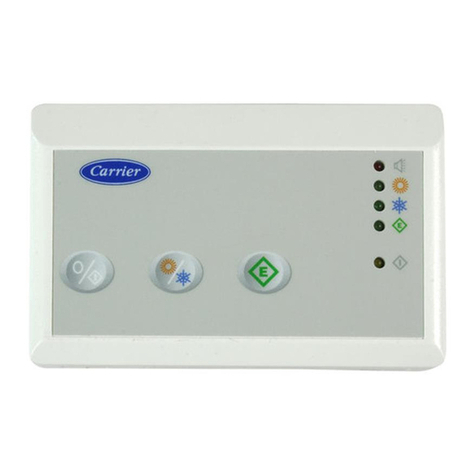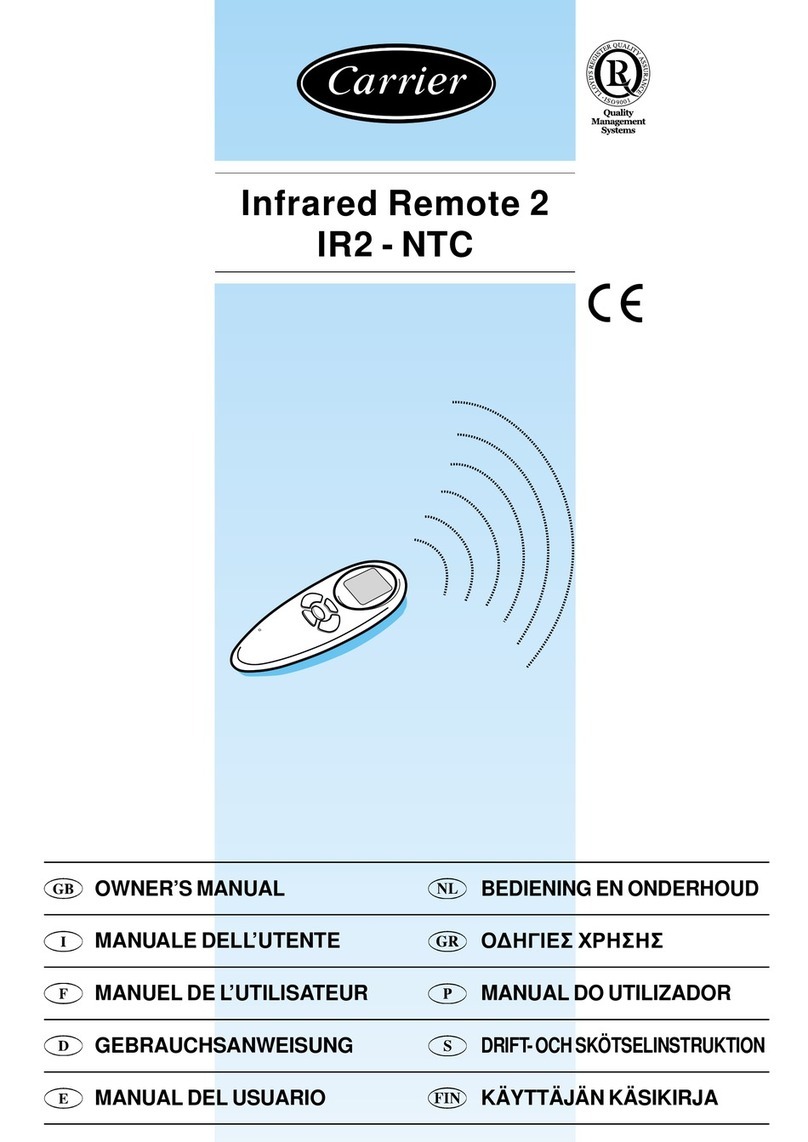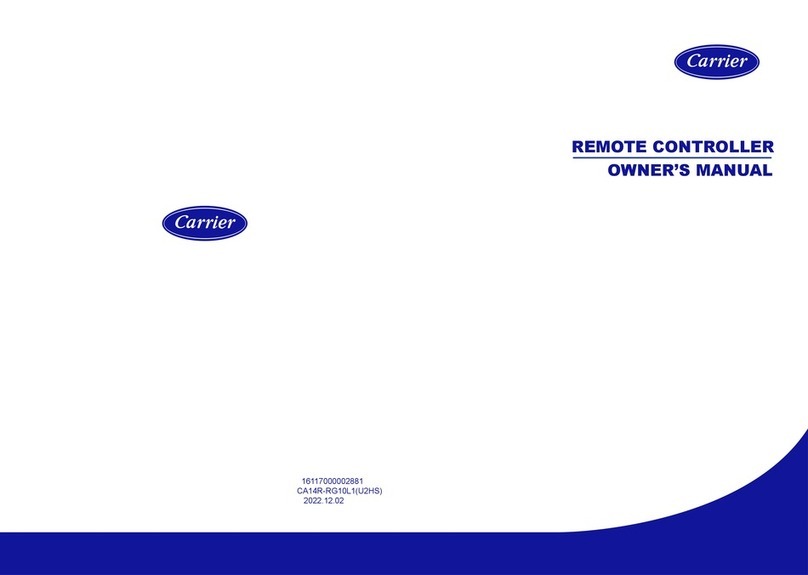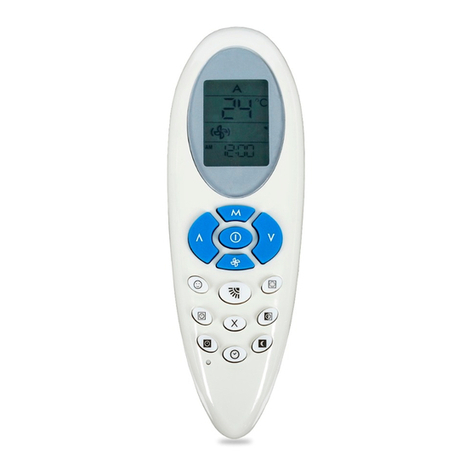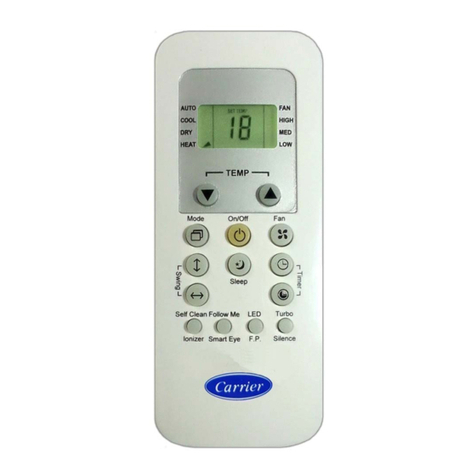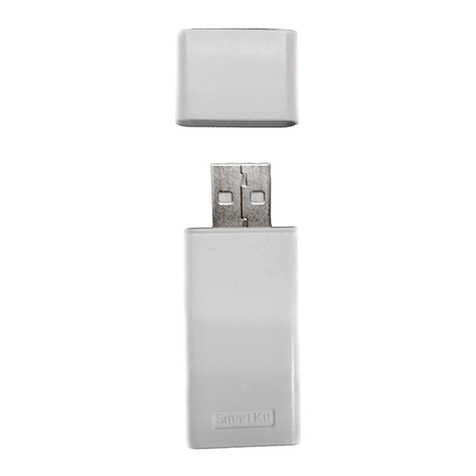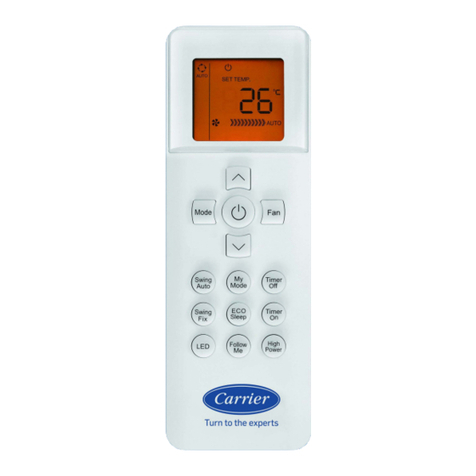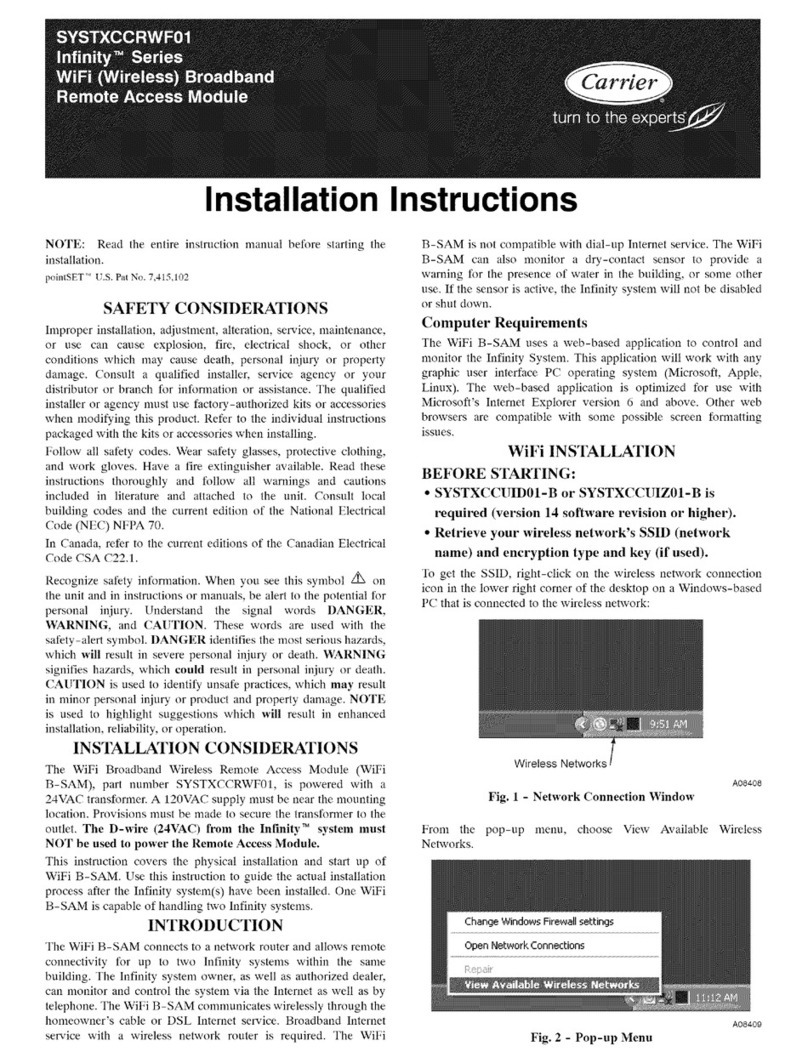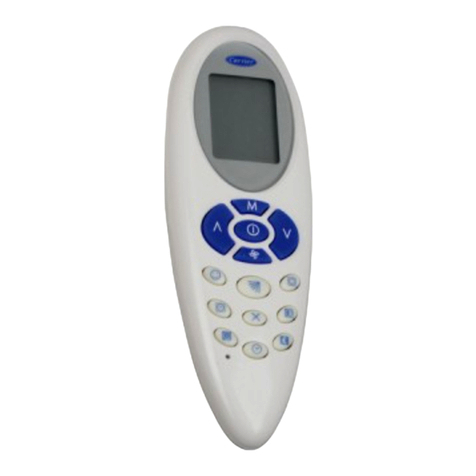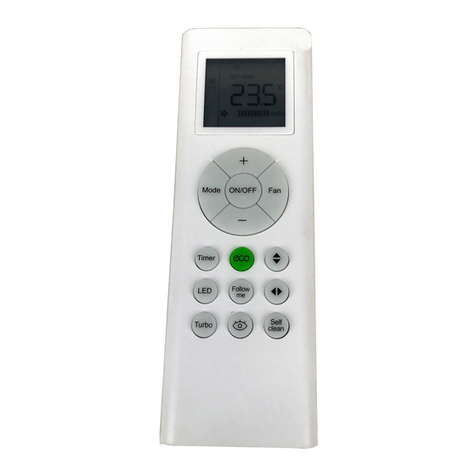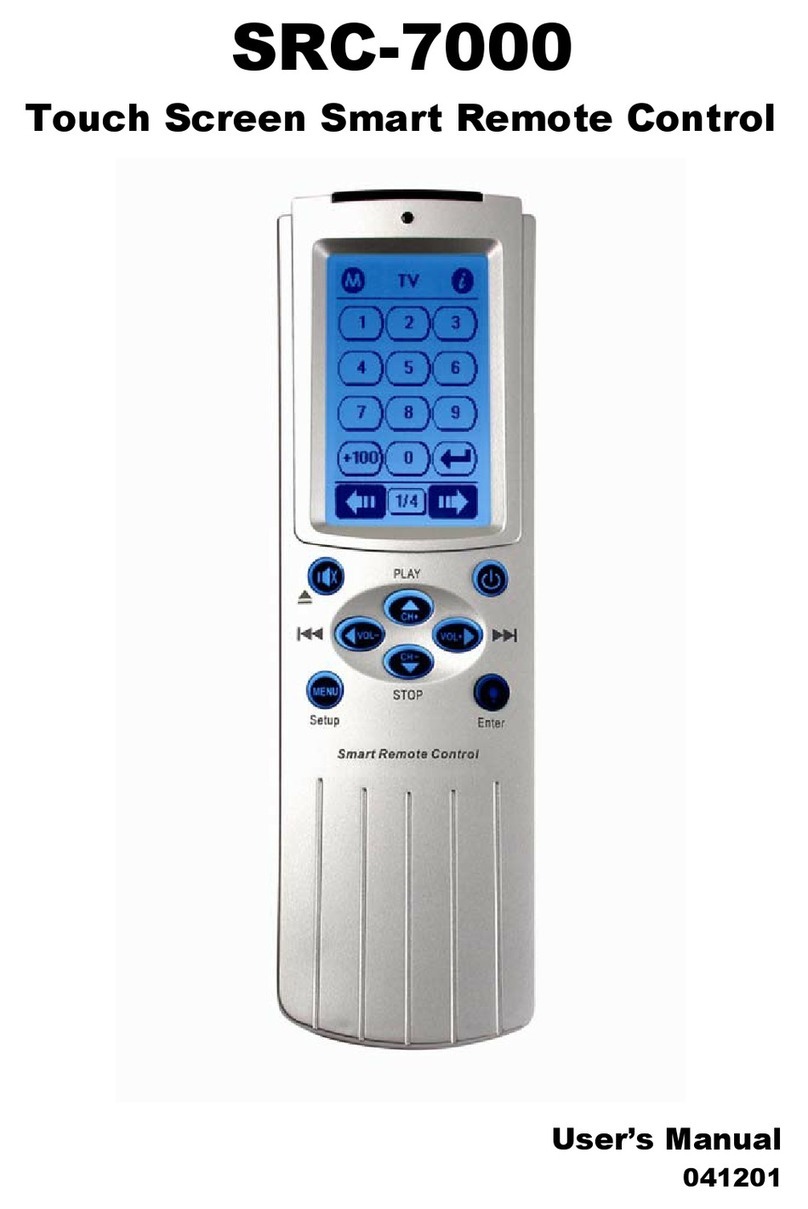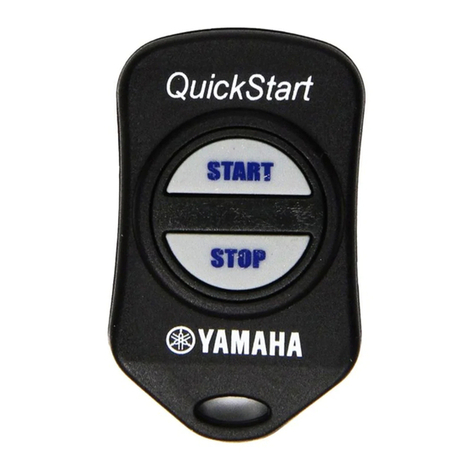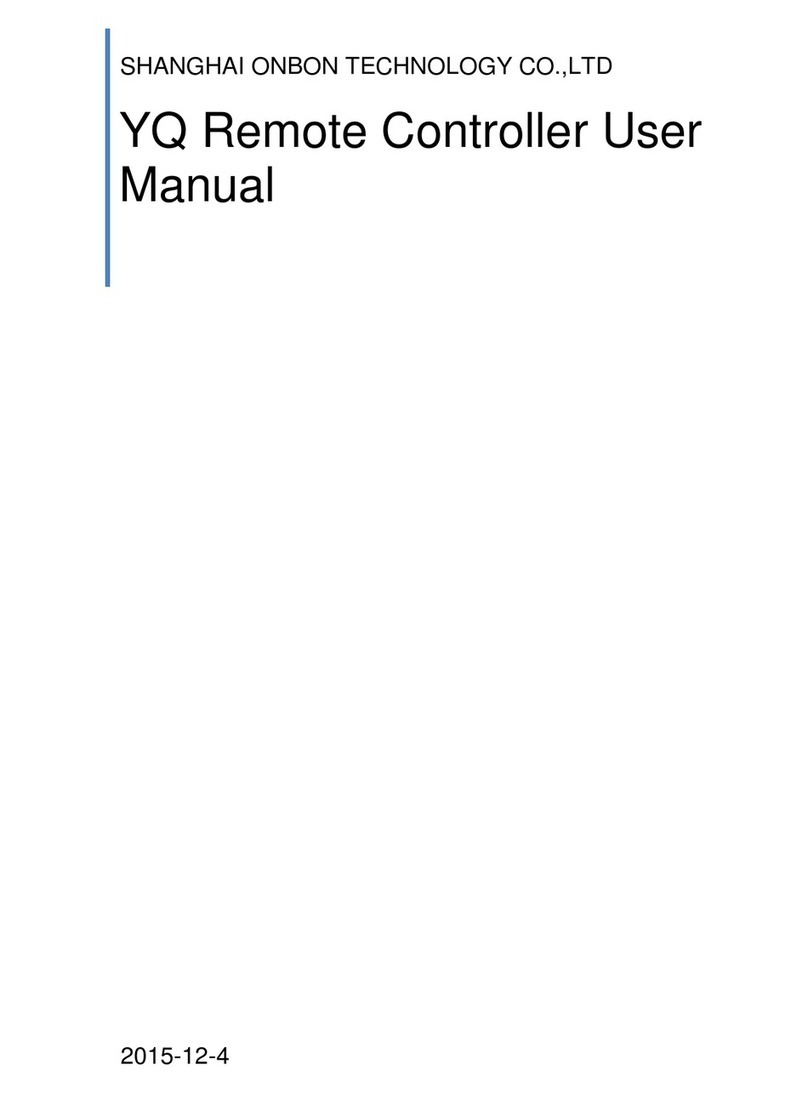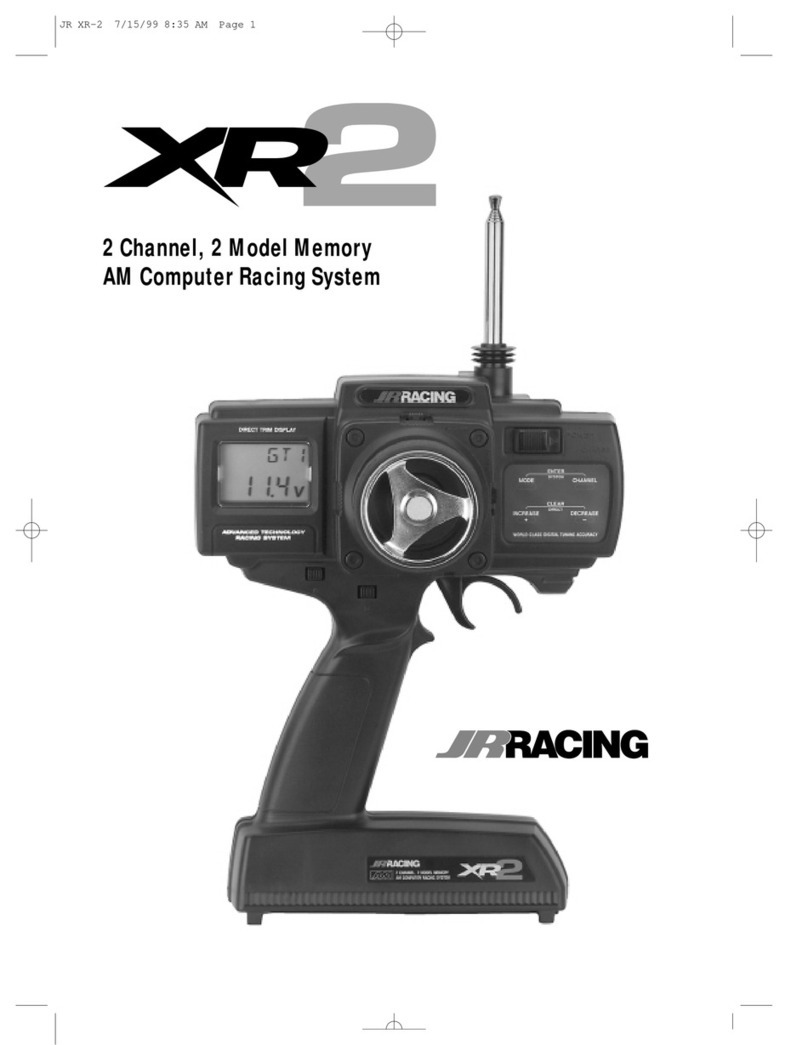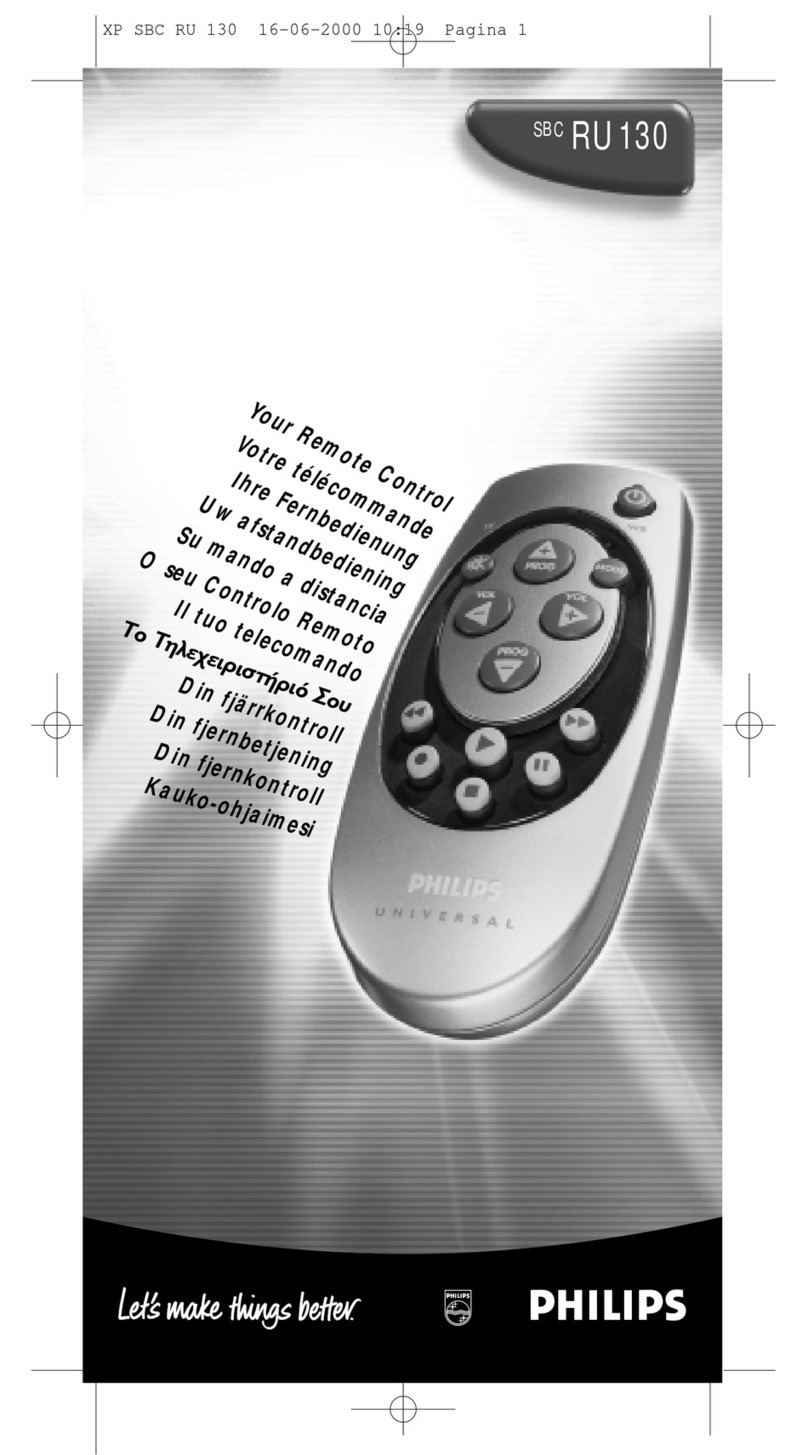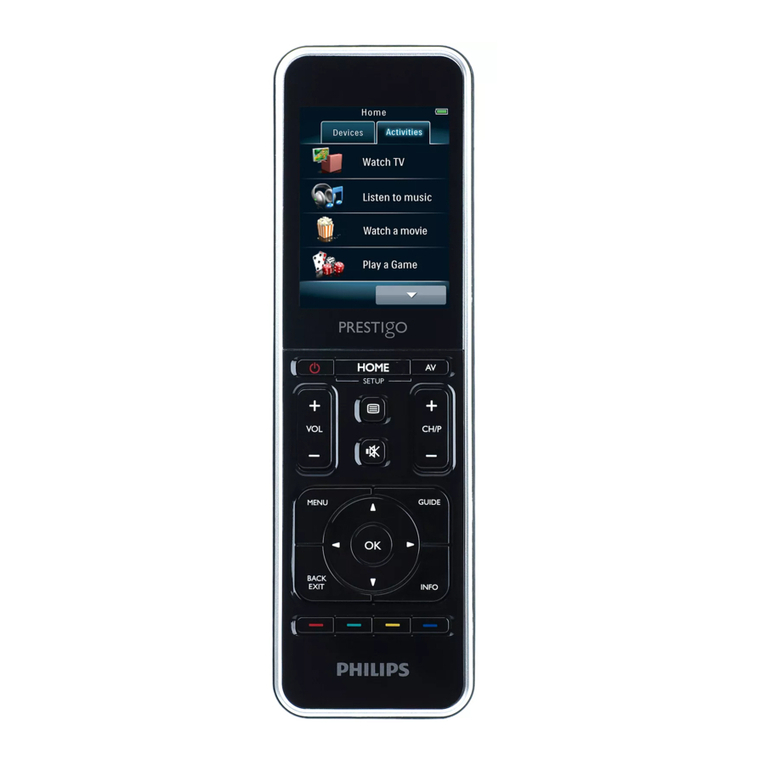Power Transformer Wiring -- An individual, field-
supplied, 24 vac power transformer is highly recommended for
each System Pilot. Transformers must be UL Class 2 rated.
Standard applications require a 24 vac transfonnel: rated at
40 va typic_d. All transformer secon&uies are required to be
grounded. Use only stranded copper conductors for _dl wiring
to the System Pilot.
Wiring connections must be made in accor&mce with NEC
(National Electric_d Code) and local codes. Ground one side of
the transformer secondary at the transformer location. Connect
the system ground of the transformer to the System Pilot
terminal JPI-I (GND). Connect the 24 VAC- side of the
transformer to the System Pilot terminal JP1-2 (24 VAC-).
Connect the 24 VAC+ live side of the transformer to the
System Pilot terminal JP1-3 (24 VAC+). See Fig. 1. The power
supply is 24 vac at 60 Hz _+15%, 10 va minimum.
NOTE: Do not run sensor or communication wiring in the
same conduit with line-voltage wiring. Do not run 24-vac
wiring in the same multi-conductor cable used for sensors
or communications.
Perform the following steps to connect the power
transformer:
1. Install the field-supplied transformer in an electrical
enclosure that conforms to NEC and local codes.
2. Connect 24 vac from the transformer as shown in the
wiring diagram (Fig. 1). Be sure to observe polarity
when connecting the transformer power. The grounded
terminal must be connected to the transformer ground
terminal as shown.
If the system pilot is powered with the salne transformer
as the other devices, be sure that polarity is maintained
and that adequate power is available for all devices. Never
power half-wave and lull-wave devices on the same
transformer or &_mage may occur to one or both devices.
Carrier Network Communication Bus Wiring --
The System Pilot connects to the bus in a daisy chain ammge-
ment. The System Pilot may be installed on a primary C;urier
communication bus or on a local bus wired to a VVT Zone
Controller's COMM2 port. When many System Pilots _ueused,
connecting to a loc_d bus is recommended. See Fig. 2 for local
bus wiring to a zone controllel:
At tiny baud (9600, 19200, 38400 baud), the number of
controllers is limited to 128 zones maximum. Bus length may
not exceed 4000 1l, with no more than 60 total devices on any
1000-ft section. Optically isolated RS-485 repeaters _ue
required every 1000 ft.
The fiLst device in a netwoN connects directly to the bridge
and the others ;ue wired sequenti_dly in a daisy chain fashion.
Refer to Fig. 3 for an illustration of Cturier Communication
Bus wiring.
COMMUNICATION BUS WIRE SPECIFICATIONS --
The communication bus wiring is field-supplied and field-
installed. It consists of shielded three-conductor cable with
drain (ground) wire. The cable selected must be identic_d to
the communication bus wire used for the entire network. See
Table 1 for recommended cable.
Table 1 -- Recommended Cables
MANUFACTURER CABLE PART NO.
Alpha 2413 or 8463
American A22503
Belden 8772
Columbia 02525
NOTE: Conductors and drain wire must be at least 20 AWG (American Wire
Gage), stranded, and tinned copper. Individual conductors must be insulated
with PVC, PVC/nylen, vinyl, Teflon, or polyethylene, An aluminum/polyester
100% foil shield and an outer jacket of PVC, PVC/nylon, chrome vinyl, or
Teflon with a minimum operating temperature range of -20 C to 60 C is
required.
CONNECTION TO THE COMMUNICATION BUS
1. Strip the ends of the red, white, and black conductors
of the communication bus cable.
2. Connect one end of the communication bus cable to
the communication port labeled COMM2 (if connect-
ing on a local bus).
When connecting the communication bus cable, a
color code system for the entire network is recom-
mended to simplify installation and checkout. See
Table 2 for the recommended color code.
Table 2 -- Color Code Recommendations
CON BUS WIRE
SIGNAL TYPE COLOR
+Red
Ground White
Black
PLUG PIN
NUMBER
6
5
4
3. Connect the other end of the communication bus cable
to the terminal block labeled Carrier Network Connec-
tion on the System Pilot. See Fig. 1. Following the
color code in Table 2, connect the Red (+) wire to
Terminal JPI-6 (CCN+). Connect the White (ground)
wire to Terminal JPI-5 (CCN GND). Connect the
Black (-) wire to Terminal JPI-4 (Carrier Network
Connection -).
4. If connecting to a Carrier communicating network bus,
connect additional devices in a daisy chain fashion,
following the color coded wiring scheme in Table 2.
Refer to Fig. 3.
NOTE: The communication bus drain wires (shield) must
be tied together at each device. If the communication bus is
entirely within one building, the resulting continuous shield
must be connected to ground at only one single point. If the
communication bus cable exits from one building and enters
another building, connect the shields to ground at a light-
ning suppressor in each building where the cable enters or
exits (one point only).
Mounting -- There are two options for mounting the Sys-
tem Pilot to the w_dl, recess mounting or surface mounting. The
System Pilot will snap together with either the Recess Mount
or the Surface Mount backpkite.
NOTE: The recess mount backplate is provided with the
System Pilot.
RECESS MOUNT--This provides the thinnest mounting
configuration (See Fig. 4). The backplate containing the
recessed terminal block can be mounted directly to the wall by
cutting a hole 13/4-in. wide by 21/8-in. high. Mark location and
cut hole in wall. Ensure the System Pilot location is acceptable
before cutting tiny holes in wall.
SURFACE MOUNT -- This provides surface mounting con-
figuration, which allows use of a small hole in the wall. Surface
mount backplates may be purchased separately. (See Fig. 5.)
Attach backpkite and the assembly will mount directly to the
wall, requiring only a small hole in the wall _dlowing the wiring
connection to pass through.
Once the System Pilot is secured to wall with the backplate
assembly (snapped together), care must be taken not to
bend or break the interlocking tabs when removing. Gently
remove System Pilot by rocking up/down until interlocking
tabs release.
DECORATIVE BEZEL- A decorative bezel may be pur-
chased separately in boxes of 10. See Fig. 6. The bezel can be
used to hide any marks/screw holes left from the previous
thermostat. This decorative bezel can be used in either the
recess or surface mount installation by snapping it onto back of
recessed mount backplate or surface mount backplate before
securing to wall.
